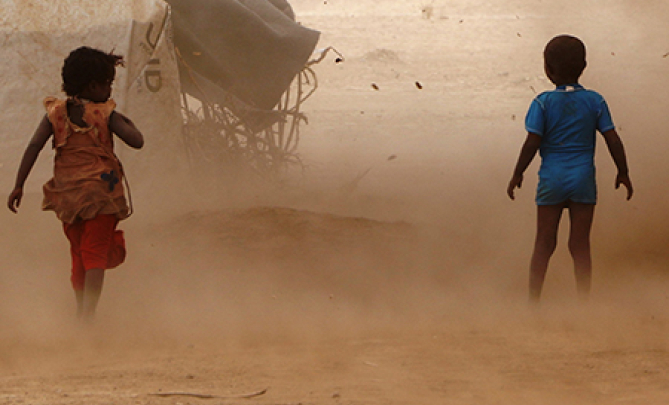Overview
GAP III thematic area of engagement: Addressing the challenges and harnessing the opportunities offered by the green transition
This section presents the GAP III objectives and related indicators for GAP III thematic area Addressing the challenges and harnessing the opportunities offered by the green transition. For further relevant sector indicators and results, consult the following guidances on Green Economy and Sustainable Cities.
Women and girls in developing countries are particularly affected by the impact of climate change and environmental degradation, such as ecosystem loss, loss of access to key natural resources, malnutrition and respiratory, water-related and vector-borne diseases.

Source: UNDP, Gender and Climate Change, 2016; UNDP, Gender, climate change adaptation and disaster risk reduction, 2016; The State of Food and Agriculture: Women in Agriculture. FAO, 2011 FAO, The Gender Gap in Land Rights, 2018.
As primary users and managers of natural resources, women play an essential role for climate change mitigation and adaptation and environmental protection. However, they are prevented from participating equally in related governance processes for multiple reasons, including harmful gender norms, inadequate legal frameworks, low access to education and land ownership. However, women activists all over the world are championing environmental rights and young women are taking the lead to advocate for change. The EU is determined to act on the gender dimension of environmental degradation and climate change also with regard to fragile situations, and mindful of the specific needs and roles of indigenous women directly relying on natural resources.
The Gender Action Plan III promotes EU actions that contribute to:
- promoting girls’ and women’s participation and leadership in order to ensure gender-responsive strategies to climate mitigation and adaptation, disaster risk reduction, and the inclusive and sustainable management of natural resources
- supporting women networks in green transition sectors such as sustainable forest management, agriculture and energy
- capacity-building, financing and support for investment in gender-responsive national climate, environment and disaster risk reduction strategies and action plans
- supporting women’s entrepreneurship and employment in the green, blue and circular economy, including clean cooking and sustainable energy, sustainable fishing activities, by promoting a gender-transformative approach to agriculture, fishing and aquaculture and food systems, based on (i) capacity building for rural women; (ii) policy reforms to regulate more fairly land tenure and to manage natural resources and (iii) economic empowerment and access to finance
- improving data collection on the gender-differentiated impacts of climate change and environmental degradation to inform gender-responsive policies and action
